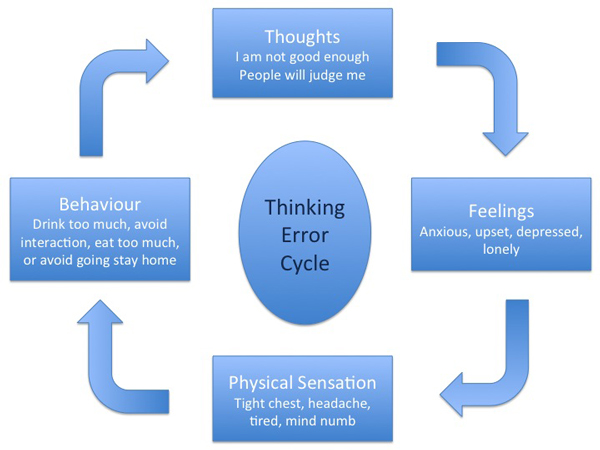
Thought challenging in Cognitive Behavioural Therapy
Thought challenging — also known as cognitive restructuring — is a process in which you challenge the negative thinking patterns that contribute to your anxiety, replacing them with more positive, realistic thoughts. This involves three steps:
- Identifying your negative thoughts. With anxiety disorders, situations are perceived as more dangerous than they really are. To someone with a germ phobia, for example, shaking another person’s hand can seem life threatening. Although you may easily see that this is an irrational fear, identifying your own irrational, scary thoughts can be very difficult. One strategy is to ask yourself what you were thinking when you started feeling anxious. Your therapist will help you with this step.
- Challenging your negative thoughts. In the second step, your therapist will teach you how to evaluate your anxiety-provoking thoughts. This involves questioning the evidence for your frightening thoughts, analysing unhelpful beliefs, and testing out the reality of negative predictions. Strategies for challenging negative thoughts include conducting experiments, weighing the pros and cons of worrying or avoiding the thing you fear, and determining the realistic chances that what you’re anxious about will actually happen.
- Replacing negative thoughts with realistic thoughts. Once you’ve identified the irrational predictions and negative distortions in your anxious thoughts, you can replace them with new thoughts that are more accurate and positive. Your therapist may also help you come up with realistic, calming statements you can say to yourself when you’re facing or anticipating a situation that normally sends your anxiety levels soaring.
To understand how thought challenging works in Cognitive Behavioural Therapy, consider the following example: Maria won’t take the subway because she’s afraid she’ll pass out, and then everyone will think she’s crazy. Her therapist has asked her to write down her negative thoughts, identify the errors — or cognitive distortions — in her thinking, and come up with a more rational interpretation.